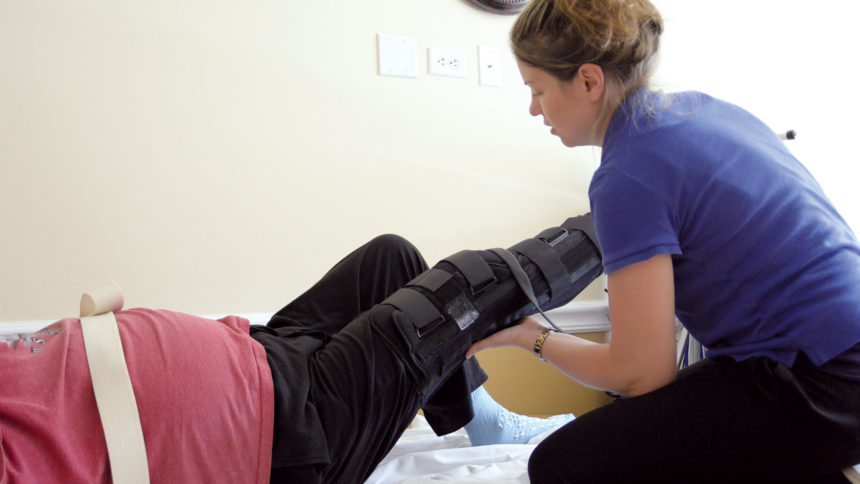
Rehabilitation plays a critical role in helping residents regain function and stay active and engaged, but the way it’s delivered can mean the difference between satisfactory outcomes and exceptional ones. Experts agree that person-centered therapy that’s uniquely tailored to each resident’s needs, abilities and past and current interests is the ultimate key to success.
“People perform at their best when socially, emotionally and physically engaged. When we match personal interests and clinical intervention needs, we are more likely to make a connection that motivates people to work for longer and more thorough treatment sessions,” says Christopher Krause, OT/L, director of rehabilitation for It’s Never 2 Late.
More than ever, therapy providers recognize that the days of relying on standard or routine therapy techniques and modalities for all residents are a thing of the past. A one-size-fits-all approach no longer works in healthcare, as a whole, and in the long run is detrimental to the patient or resident, explains Tim O’Malley, president of EarlySense.
“Personalized care carefully assesses each patient and ensures the therapy meets their needs,” he says
Tapping the team
“When our therapists begin to work with a new patient, the first question they ask [is about their personal goals],” says Mary Van de Kamp, chief clinical officer at RehabCare. “The answers we get are not clinical answers. We often hear things like, ‘I want to be able to dance at my granddaughter’s wedding’ or ‘I want to be flexible enough to be able to play with my great-grandchild.’ ”
Many residents can verbalize specific goals and clearly communicate their hobbies, interests, personal preferences and occupational histories — critical information that can serve as a valuable motivator when creatively woven into therapy sessions. Those with cognitive and/or functional impairment, however, may struggle to provide that information, but their need for individualized care is no less diminished.
“Residents need their voices to be heard, and they need to know their opinions about things matter,” explains Lisa Milliken, MA, CCC-SLP, FNAP, educational specialist and ASHA CE administrator for Select Rehabilitation. The therapist often is the perfect person to listen, and when residents can’t speak for themselves, family members and the collective care team can help communicate for them so the best therapy approach can be determined.
The interdisciplinary care team approach is essential not just within the walls of the senior living community, but also at different points in the care continuum. Stroke rehabilitation, for example, often involves healthcare professionals from several disciplines, because a stroke can affect many functions, including paralysis and weakness, gross and fine motor skills, speech and language, cognition, vision, and emotions, notes Liz Barlow, RN, senior director of quality for RehabCare.
Greater benefits
Computer-based technology is playing a greater role in rehabilitation, allowing therapists to reach residents in meaningful ways to improve motivation and session engagement.
“Therapists utilizing various computer technologies can do some amazing things that are not at all possible without the technology,” Krause says, adding that computer-based solutions can be especially reliable tools for engaging those with dementia and other forms of cognitive impairment. “By presenting various stimuli that may include pictures, videos, music, cognitive content and gradable activities that match each individual’s personal preferences, we find we’re reliably capable of reaching people at their level, in that moment.”
Technology also can help therapists find the most appropriate level of challenge for each resident. Tapping into a patient’s or resident’s intrinsic motivation is extremely powerful, but it’s often difficult to do, says Mark Evin, co-founder and CEO of Jintronix. “People are most energetic when they’re doing something that’s not too easy but not too hard, and there is a lot of clinical research to back this up,” he says. “Patients achieve their goals while family and friends cheer them on. They can see their loved one’s progress through the app and can send notes of encouragement,” says Jason Zachariah, president of Kindred Rehabilitation Services.
Physicians especially appreciate therapy providers who communicate progress and updates related to transitioning to the next level of care, adds Jodi Despoy, senior vice president of HealthPRO Heritage’s Senior Living Division. “Garnering the support of the physician is an element that will additionally strengthen the trust between resident and therapist.” n

